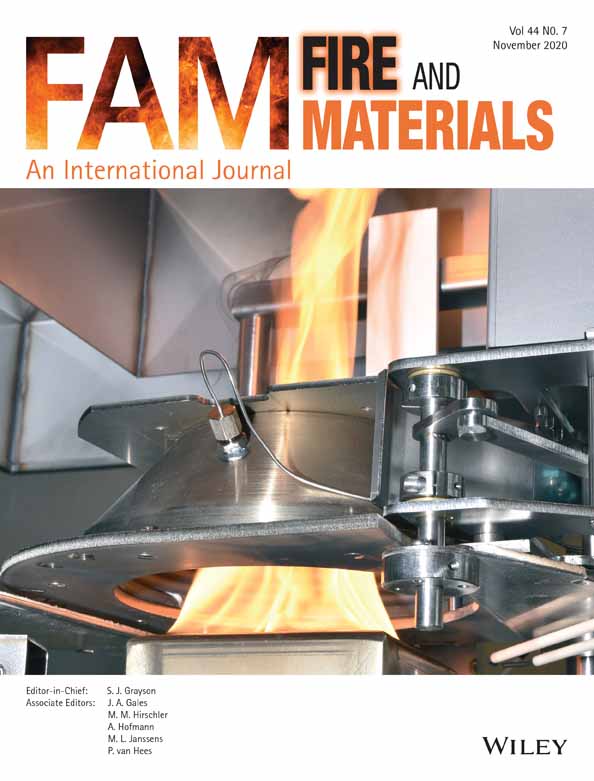A novel high polymer nanocomposite inhibitor for coal gangue spontaneous combustion prevention: A case study of Yangquan coal gangue in China
Funding information: Fundamental Research Funds for the Central Universities (China University of Mining and Technology), Grant/Award Number: 2017CXNL02; National Key Research and Development Program of China, Grant/Award Numbers: 2018YFC0810600, 2018YFC0810600; Natural Science Foundation of Jiangsu Province, Grant/Award Number: BK20180655; State Key Laboratory Cultivation Base for Gas Geology and Gas Control (Henan Polytechnic University), Grant/Award Number: WS2018B03; Work Safety Key Lab on Prevention and Control of Gas and Roof Disasters for Southern Coal Mines of China (Hunan University of Science and Technology), Grant/Award Number: E21724; Hunan University of Science and Technology, Grant/Award Number: E21724; Henan Polytechnic University, Grant/Award Number: WS2018B03; China University of Mining and Technology; Fundamental Research Funds for the Central Universities; National Natural Science Foundation of China, Grant/Award Numbers: 51474017, 51904292, 51974015
Summary
Coal gangue spontaneous combustion produces toxic and harmful gases. This research aims to study a new type of polymer nanocomposite inhibitor to prevent and control coal gangue spontaneous combustion. Nanomodification of montmorillonite (MMT) was carried out on high polymer emulsion inhibitor polyacrylamide (PAM) to improve its thermal stability and overcome the short inhibition duration problem. First, through scanning electron microscope (SEM), energy-dispersive spectrometer (EDS), and proximate analysis experiments, it was found that the coal gangue in the Yangquan mining area was prone to spontaneous combustion. Then, PAM/MMT was produced by an intercalation method. The results of X-ray diffraction (XRD) and differential scanning calorimetry (DSC) showed that the interval spacing of MMT increased, which was sufficient for the insertion of acrylamide monomer. The vitrification temperatures of PAM and PAM/MMT prove that PAM/MMT exhibited higher thermal stability. The results of Fourier transform infrared spectroscopy (FTIR) experiments indicated that the PAM/MMT composite inhibitor agent effectively inhibited the oxidative activity of reactive groups on the coal gangue surface. As a result, PAM/MMT could suppress coal gangue oxidative spontaneous combustion, so as to reduce environmental problems caused by coal gangue spontaneous combustion. Furthermore, a spraying process is designed for the application of the inhibitor.




